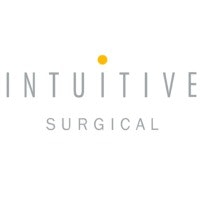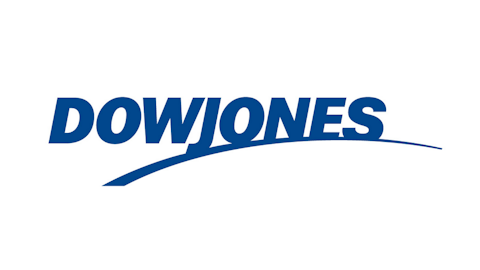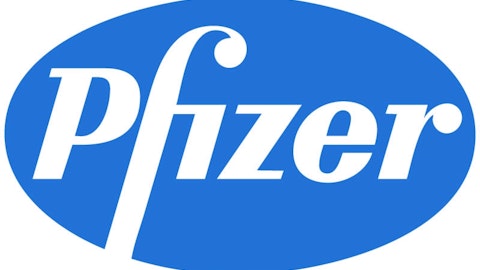When we go to the hospital, the last thing on our mind is that something could go wrong or that we could actually become sicker than when we first went in. Unfortunately, human errors do happen, infections can spread, and surgery can occasionally be botched. Make no mistake about it; errors are quite rare, and you should certainly seek medical attention when you need it — but these bad apples are enough to spoil the public’s perception of safety in our nation’s hospitals.

Source: U.S. Navy, Wikimedia Commons.
It’s pretty easy for the public to be skeptical of medical care in hospitals when you don’t have to look far for tales of wrongdoing. Just last year, CNN highlighted 10 common mistakes found in hospitals, ranging from operating on the wrong body part, to patients waking up during surgery. Ultimately, some of these mistakes do result in what would be deemed a preventable death in our nation’s hospitals.
With that in mind, I thought it would be educational to delve into what actually is the leading cause of preventable death among hospital patients and what steps are being taken from a surgical and medicinal perspective to ensure that this mortality rate continues to drop.
My initial guess, without reviewing any of the data, was that hospital-acquired infections, or HAIs, would be the leading cause of preventable death. While I was on the right track, HAIs are only a top-five cause of death among hospital patients. There is actually a much more virulent killer in our hospitals that strikes about 1.1% of the patient population that undergoes surgery each year, according to the U.S. Department of Health and Human Services.
The leading cause of preventable patient death in hospitals is…
At the top of the chart in preventable hospital patient death is venous thromboembolism, or VTE — a scientific name for a blood clot. A study in the Morbidity and Mortality Weekly Report examined VTEs between 2007 and 2009 and found that there were 547,596 instances over the given time period. An even scarier study from the American Heart Association estimates 900,000 cases of VTE occur annually, leading to some 300,000 deaths!
There are two types of VTEs: deep-vein thrombosis, or DVT — which occurs in a large vein, most often in the legs — and pulmonary embolism, or PE, which is a blockage of the main artery of the lung via a blood clot. Although DVT is more common, the vast majority of deaths are caused by pulmonary embolism.
Now that we know what the leading cause of preventable death is in our nation’s hospitals, let’s get into what’s being done to reverse these mortality rates and what that could mean for the companies involved in combating this hospital-acquired ailment.
As I see it, there are three ways that hospitals and physicians can dramatically reduce the occurrence of hospital-acquired VTE: improvement of the surgery procedure itself, better quality post-surgical medication, and more precise identification of higher-risk patients.

Reducing VTEs through more precise instrumentation
One possible way to reduce the potential for developing a blood clot is to reduce the incision size or invasiveness of a surgical procedural. Two companies working diligently on doing just this are robotic surgical system developers Intuitive Surgical, Inc. (NASDAQ:ISRG) and MAKO Surgical Corp. (NASDAQ:MAKO).
Intuitive Surgical, Inc. (NASDAQ:ISRG)’s da Vinci surgical system is most often used for minimally invasive soft tissue surgical procedures in order to reduce recovery time and minimize incision size. MAKO Surgical Corp. (NASDAQ:MAKO), on the other hand, provides the robotic arm interactive orthopedic system, also known as RIO, to enable tissue-sparing bone removal and allow orthopedics such as knee and hip replacement to fit into place. Traditional laparoscopic or joint replacement surgery has the potential to yield larger and less precise incision sizes, which can increase patients’ chances for acquiring an infection or, even worse, developing a VTE. As Intuitive Surgical, Inc. (NASDAQ:ISRG) and MAKO Surgical Corp. (NASDAQ:MAKO)’s robotic devices gain greater acceptance – which may take a while since teaching physicians how to use these devices is time-consuming — we may see a lessening in hospital-acquired VTE.
Controlling VTE occurrence through medication
After surgery is complete, one way to prevent clotting in patients (depending on the invasiveness of the surgery) is to use a combination of surgery compression stockings on the legs and blood-thinning medications. Of course, physicians need to be careful with the amount of blood thinners they use because anticoagulants can be just as dangerous from the potential of causing unabated bleeding.
The staple of all DVT- and PE-preventing medications up until last year had been Sanofi SA (ADR) (NYSE:SNY)‘s injectable Lovenox, which delivered $2.8 billion in net sales in 2011 but has since fallen in relevance because of the loss of patent exclusivity in 2012. Instead, Momenta Pharmaceuticals, Inc. (NASDAQ:MNTA), in partnership with Novartis AG (ADR) (NYSE:NVS), has been selling a generic version of Lovenox, which it received approval for from the Food and Drug Administration in 2010.
However, both branded and generic Lovenox may cede market share in time to Johnson & Johnson (NYSE:JNJ)‘s Xarelto, which is taken orally instead of injected, and is primed to treat DVT and P/E for high-risk patients, as well as a preventative measure for those who’ve had hip or knee replacement surgery. Sales of the drug have absolutely taken off, rising 266% in 2012, and I suspect with Lovenox now completely off patent, this next-generation all-in-one drug could see sales romp even higher. More importantly, it means improved patient care for the some 900,000 persons with hospital-acquired VTE each year.
Looking down the road, Pfizer Inc. (NYSE:PFE) and Bristol Myers Squibb Co. (NYSE:BMY)‘s Eliquis may unseat all of these drugs. While only currently approved to mitigate the risk of developing a blood clot for patients with atrial fibrillation, Eliquis demonstrated superiority over the placebo in a long-term recurrent VTE study. In the trial, the 2.5mg and 5mg doses of twice-daily oral Eliquis reduced recurrent VTE or death to 3.8% and 4.2%, respectively, from 11.6% for the placebo, after a year. Furthermore, the safety profile was comparable to that of the placebo. Don’t be shocked if this soon-to-be blockbuster adds this additional preventative indication in the future.
Identifying high-risk VTE
The final factor that can help prevent a rise in VTE occurrence is in recognizing which patients are at higher risk for developing VTE. Currently, patients who are predisposed to high-risk VTE are given ultrasounds if they’re suspected of developing DVT, or a CT scan if they’re suspected of developing PE.
One possible diagnostic tool for the future that’s currently being underutilized in many hospitals is genetic or molecular analysis. A quick and cost-effective turnaround in personalized genetic analysis could reveal clues to physicians as to whether someone is more susceptible to clots because of their genetic factors.
The takeaway
While it appears that VTE is simply a risk that surgery patients have to come to terms with, it’s comforting to know that better surgical standards and innovative new blood thinners are being introduced to help curb its occurrence. Hopefully in a few years we can look back and see a major decline in hospital-acquired VTE occurrences.
As an investor, I would be encouraged by the potential that robotic surgical device maker like Intuitive Surgical offer, but I’d keep a close eye on Pfizer Inc. (NYSE:PFE) and Bristol Myers Squibb Co. (NYSE:BMY)’s Eliquis as it has game-changing potential written all over it.
The article This Is the Leading Cause of Preventable Hospital Patient Deaths originally appeared on Fool.com is written by Sean Williams.
Fool contributor Sean Williams has no material interest in any companies mentioned in this article. You can follow him on CAPS under the screen name TMFUltraLong, track every pick he makes under the screen name TrackUltraLong, and check him out on Twitter, where he goes by the handle @TMFUltraLong.The Motley Fool owns shares of, and recommends, Intuitive Surgical, Johnson & Johnson, and Momenta Pharmaceuticals. It also recommends MAKO Surgical.
Copyright © 1995 – 2013 The Motley Fool, LLC. All rights reserved. The Motley Fool has a disclosure policy.





